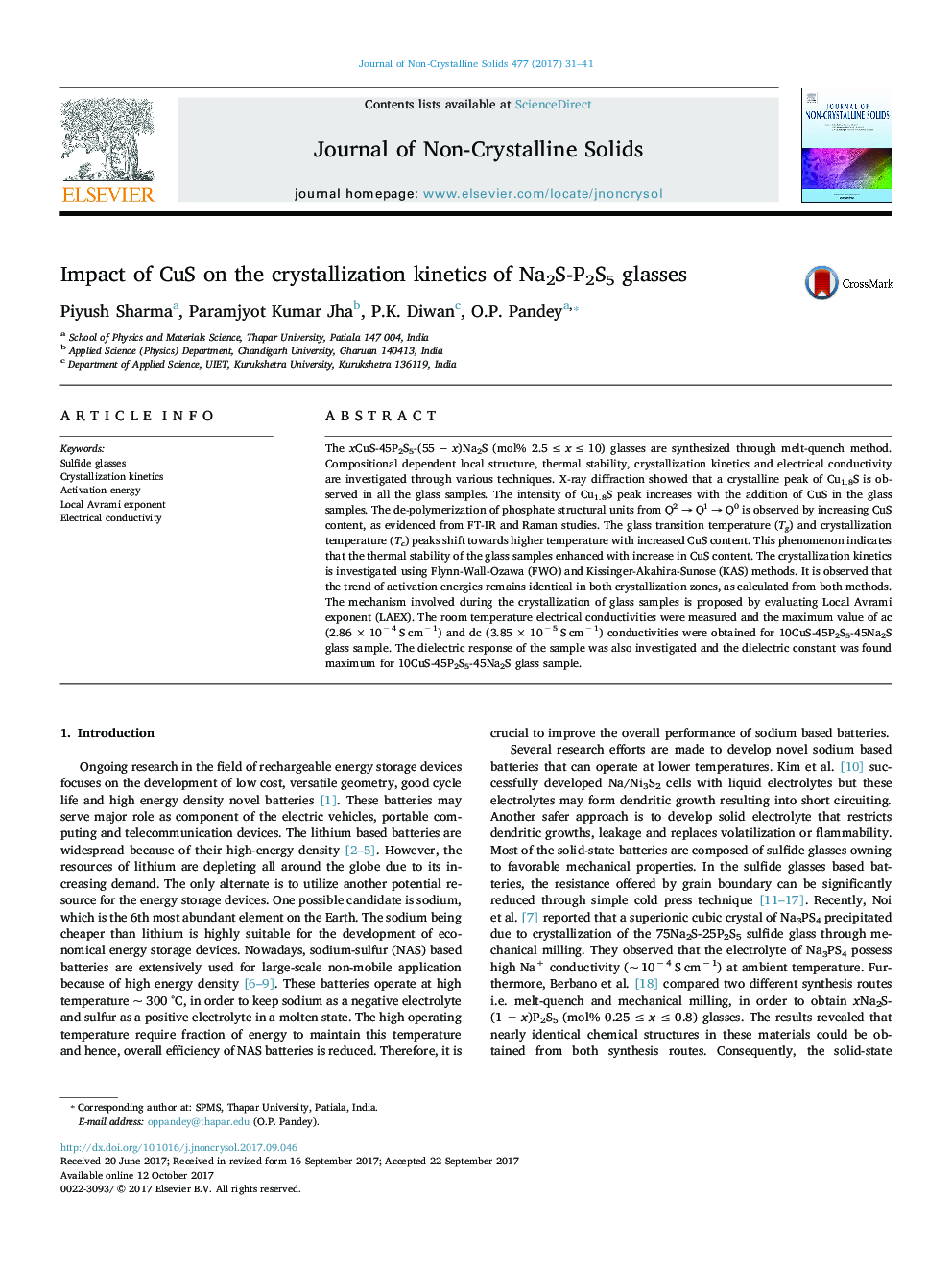| Article ID | Journal | Published Year | Pages | File Type |
|---|---|---|---|---|
| 7900469 | Journal of Non-Crystalline Solids | 2017 | 11 Pages |
Abstract
The xCuS-45P2S5-(55 â x)Na2S (mol% 2.5 â¤Â x â¤Â 10) glasses are synthesized through melt-quench method. Compositional dependent local structure, thermal stability, crystallization kinetics and electrical conductivity are investigated through various techniques. X-ray diffraction showed that a crystalline peak of Cu1.8S is observed in all the glass samples. The intensity of Cu1.8S peak increases with the addition of CuS in the glass samples. The de-polymerization of phosphate structural units from Q2 â Q1 â Q0 is observed by increasing CuS content, as evidenced from FT-IR and Raman studies. The glass transition temperature (Tg) and crystallization temperature (Tc) peaks shift towards higher temperature with increased CuS content. This phenomenon indicates that the thermal stability of the glass samples enhanced with increase in CuS content. The crystallization kinetics is investigated using Flynn-Wall-Ozawa (FWO) and Kissinger-Akahira-Sunose (KAS) methods. It is observed that the trend of activation energies remains identical in both crystallization zones, as calculated from both methods. The mechanism involved during the crystallization of glass samples is proposed by evaluating Local Avrami exponent (LAEX). The room temperature electrical conductivities were measured and the maximum value of ac (2.86 Ã 10â 4 S cmâ 1) and dc (3.85 Ã 10â 5 S cmâ 1) conductivities were obtained for 10CuS-45P2S5-45Na2S glass sample. The dielectric response of the sample was also investigated and the dielectric constant was found maximum for 10CuS-45P2S5-45Na2S glass sample.
Keywords
Related Topics
Physical Sciences and Engineering
Materials Science
Ceramics and Composites
Authors
Piyush Sharma, Paramjyot Kumar Jha, P.K. Diwan, O.P. Pandey,
